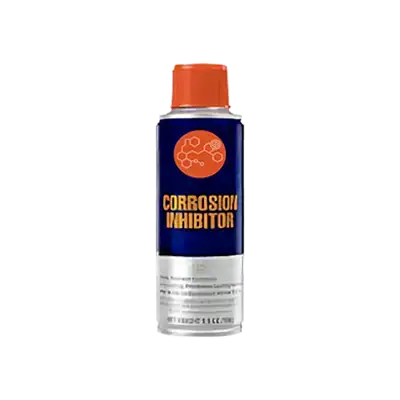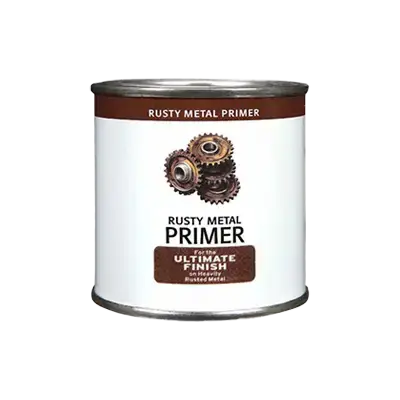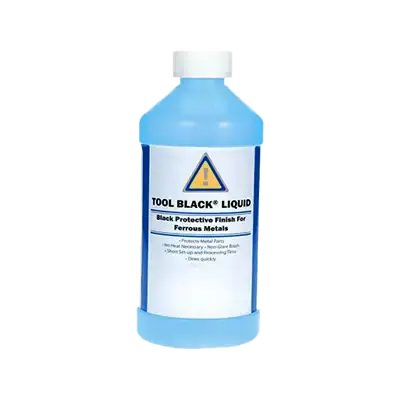Call +(254) 703 030 000 / 751 483 999 / 721 704 777
- Home
- Floor Wall Other Surface Finishes
- Paint Equipment Supplies
- Specialized Paints Coatings
- Corrosion Inhibitors Rust Prevention
.....Read More
Frequently Asked Questions
What are rust and corrosion inhibitors?
Rust and corrosion inhibitors are substances used to prevent or slow down the oxidation and degradation of metals. Rust is a form of corrosion that specifically affects iron and its alloys, such as steel, resulting in the formation of iron oxide. Corrosion, more broadly, refers to the deterioration of any metal due to chemical reactions with its environment.
Rust inhibitors are typically used in environments where iron and steel are exposed to moisture and oxygen, which are necessary for rust formation. These inhibitors work by forming a protective barrier on the metal surface, preventing moisture and oxygen from reaching the metal. Common rust inhibitors include oils, greases, and specialized coatings that repel water and reduce oxidation.
Corrosion inhibitors, on the other hand, are used for a wider range of metals, including aluminum, copper, and zinc. They function by either forming a passive film on the metal surface or by altering the environment to make it less corrosive. There are several types of corrosion inhibitors:
1. **Anodic Inhibitors**: These form a protective oxide layer on the metal surface, preventing further oxidation.
2. **Cathodic Inhibitors**: These slow down the cathodic reaction, often by precipitating on the metal surface.
3. **Mixed Inhibitors**: These affect both anodic and cathodic processes, providing comprehensive protection.
4. **Volatile Corrosion Inhibitors (VCIs)**: These release a vapor that condenses on metal surfaces, forming a protective layer.
Inhibitors are used in various industries, including automotive, construction, and marine, to extend the lifespan of metal components and structures. They are applied through coatings, paints, or as additives in lubricants and coolants.
How do rust and corrosion inhibitors work?
Rust and corrosion inhibitors work by forming a protective barrier on the surface of metals, preventing exposure to moisture, oxygen, and other corrosive elements. These inhibitors can be classified into several types based on their mechanism of action:
1. **Passivating Inhibitors**: These create a thin, protective oxide layer on the metal surface, reducing its reactivity. Commonly used in environments where metals are exposed to air and moisture, they often contain chromates or phosphates.
2. **Adsorption Inhibitors**: These compounds adsorb onto the metal surface, forming a protective film that blocks corrosive agents. They often include organic compounds like amines, which bond with the metal surface through polar groups.
3. **Cathodic Inhibitors**: These reduce the rate of the cathodic reaction, often by precipitating insoluble compounds on the metal surface. Examples include compounds that form calcium or zinc deposits.
4. **Anodic Inhibitors**: These slow down the anodic reaction by forming a protective oxide layer. They are effective in environments where the metal is prone to oxidation.
5. **Volatile Corrosion Inhibitors (VCIs)**: These are used in enclosed environments. They vaporize and condense on metal surfaces, forming a protective layer. Commonly used in packaging and storage, they include compounds like nitrites and amines.
6. **Mixed Inhibitors**: These provide both anodic and cathodic protection, offering a comprehensive approach to corrosion prevention.
Inhibitors are often added to coatings, paints, or lubricants, or used as additives in cooling systems and pipelines. Their effectiveness depends on factors like concentration, environmental conditions, and the type of metal. By preventing the electrochemical reactions that lead to rust and corrosion, these inhibitors extend the lifespan of metal components and structures.
What are the types of rust and corrosion inhibitors?
Rust and corrosion inhibitors can be categorized into several types based on their chemical composition and application methods:
1. **Organic Inhibitors**: These include amines, esters, and nitrogen-based compounds. They form a protective film on the metal surface, preventing moisture and oxygen from reaching the metal.
2. **Inorganic Inhibitors**: These are often salts like phosphates, silicates, and chromates. They react with the metal surface to form a protective layer that resists corrosion.
3. **Volatile Corrosion Inhibitors (VCIs)**: These are compounds that vaporize and condense on metal surfaces, forming a protective layer. They are commonly used in packaging materials to protect metal parts during storage and transport.
4. **Anodic Inhibitors**: These work by forming a protective oxide layer on the metal surface. Examples include chromates and nitrites, which are often used in cooling systems.
5. **Cathodic Inhibitors**: These reduce the rate of the cathodic reaction, often by precipitating insoluble compounds on the metal surface. Examples include zinc and magnesium salts.
6. **Mixed Inhibitors**: These provide both anodic and cathodic protection. They are often a combination of organic and inorganic compounds.
7. **Passivating Inhibitors**: These increase the natural oxide layer on metals, enhancing their resistance to corrosion. Common examples are chromates and phosphates.
8. **Adsorption Inhibitors**: These are typically organic compounds that adsorb onto the metal surface, creating a barrier to corrosive elements.
9. **Film-Forming Inhibitors**: These create a physical barrier on the metal surface, often used in oil and gas industries.
10. **Biodegradable Inhibitors**: These are environmentally friendly options that break down naturally without harming the environment, often used in industries with strict environmental regulations.
How long do rust and corrosion inhibitors last?
The longevity of rust and corrosion inhibitors depends on several factors, including the type of inhibitor, environmental conditions, and the application method. Generally, these inhibitors can last anywhere from a few months to several years.
1. **Type of Inhibitor**:
- **Temporary Inhibitors**: Such as those used in packaging or short-term storage, typically last from a few weeks to a few months.
- **Long-term Inhibitors**: Used in coatings or treatments for industrial equipment, can last several years, often between 2 to 5 years, depending on the product and conditions.
2. **Environmental Conditions**:
- **Humidity and Temperature**: High humidity and temperature can accelerate the breakdown of inhibitors, reducing their effectiveness.
- **Exposure to Chemicals**: Contact with harsh chemicals or pollutants can degrade inhibitors more quickly.
3. **Application Method**:
- **Surface Preparation**: Proper cleaning and preparation of the surface before applying the inhibitor can enhance its longevity.
- **Application Thickness**: Thicker applications generally provide longer-lasting protection.
- **Reapplication**: Regular maintenance and reapplication can extend the life of the protection.
4. **Product Quality**: Higher-quality inhibitors, often more expensive, tend to offer longer-lasting protection due to better formulations.
5. **Material Type**: The type of metal or material being protected can also influence how long the inhibitor lasts, as some materials are more prone to corrosion.
In summary, while the lifespan of rust and corrosion inhibitors varies, selecting the right type, ensuring proper application, and considering environmental factors are crucial for maximizing their effectiveness. Regular monitoring and maintenance are also essential to ensure continued protection.
Are rust and corrosion inhibitors safe to use?
Rust and corrosion inhibitors are generally safe to use when handled according to the manufacturer's instructions and safety guidelines. These chemical compounds are designed to prevent or slow down the oxidation process that leads to rust and corrosion on metal surfaces. However, their safety largely depends on the specific formulation and the context in which they are used.
Many rust and corrosion inhibitors contain chemicals that can be hazardous if not used properly. For instance, some may include volatile organic compounds (VOCs), which can be harmful if inhaled in large quantities or over prolonged periods. Others might contain substances that can cause skin irritation or allergic reactions upon contact. Therefore, it is crucial to use personal protective equipment (PPE) such as gloves, masks, and goggles when applying these products.
In industrial settings, where inhibitors are often used in large quantities, proper ventilation is essential to minimize inhalation risks. Additionally, users should be trained in handling these chemicals safely and be aware of emergency procedures in case of accidental exposure.
For environmentally sensitive areas, it is important to choose inhibitors that are biodegradable and have minimal ecological impact. Some modern formulations are designed to be more environmentally friendly, reducing the potential for harm to aquatic life and ecosystems.
In summary, while rust and corrosion inhibitors can be safe when used correctly, it is important to follow all safety instructions, use appropriate PPE, and consider the environmental impact of the specific product being used. Always consult the product's Safety Data Sheet (SDS) for detailed information on handling, storage, and disposal.
Can rust and corrosion inhibitors be used on all metals?
Rust and corrosion inhibitors are not universally applicable to all metals. Their effectiveness depends on the type of metal, the environment, and the specific inhibitor formulation.
1. **Ferrous Metals**: Rust inhibitors are primarily designed for ferrous metals like iron and steel, which are prone to rust (iron oxide) when exposed to moisture and oxygen. These inhibitors form a protective barrier to prevent oxidation.
2. **Non-Ferrous Metals**: Corrosion inhibitors can be used on non-ferrous metals such as aluminum, copper, and brass, but the formulations differ. These metals do not rust but can corrode, forming oxides or other compounds. Inhibitors for non-ferrous metals often contain different chemicals tailored to the specific corrosion mechanisms of these metals.
3. **Stainless Steel**: While stainless steel is more resistant to corrosion due to its chromium content, it can still benefit from inhibitors in harsh environments. However, the choice of inhibitor must be compatible with the alloy to avoid adverse reactions.
4. **Environmental Considerations**: The environment plays a crucial role in the effectiveness of inhibitors. Factors such as humidity, temperature, and exposure to chemicals can influence the choice and performance of an inhibitor.
5. **Compatibility and Application**: Not all inhibitors are suitable for all applications. Some may be oil-based, water-based, or solvent-based, and their compatibility with the metal and the intended use must be considered.
In summary, while rust and corrosion inhibitors can be used on a variety of metals, their selection must be tailored to the specific metal type, environmental conditions, and application requirements to ensure effectiveness and avoid potential damage.
What are the best rust and corrosion inhibitors for outdoor equipment?
The best rust and corrosion inhibitors for outdoor equipment include:
1. **WD-40 Specialist Corrosion Inhibitor**: This long-lasting formula provides protection against rust and corrosion for up to one year outdoors. It is ideal for metal parts exposed to high humidity and salt air.
2. **Fluid Film**: Made from lanolin, this non-toxic, non-hazardous product offers excellent protection against rust and corrosion. It penetrates to the base metal, providing a long-lasting barrier.
3. **Boeshield T-9**: Developed by Boeing, this product offers a combination of waterproof lubrication and protection. It dries to a thin, waxy film that clings to metal surfaces, providing long-term protection.
4. **CorrosionX**: Known for its ability to stop and prevent rust, CorrosionX displaces moisture and provides a dielectric barrier. It is effective in marine environments and for equipment exposed to harsh conditions.
5. **CRC Heavy Duty Corrosion Inhibitor**: This product forms a protective film that seals out moisture and air, preventing rust and corrosion. It is suitable for use on equipment stored outdoors.
6. **LPS 3 Premier Rust Inhibitor**: This product leaves a soft, waxy film that protects metal surfaces from rust and corrosion. It is ideal for long-term storage and outdoor exposure.
7. **Rust-Oleum Rust Inhibitor**: This easy-to-use spray provides a protective coating that prevents rust on metal surfaces. It is suitable for use on tools, machinery, and other outdoor equipment.
8. **3M Rust Fighter-I**: Designed for automotive use, this product provides a protective coating that prevents rust and corrosion. It is effective for outdoor equipment exposed to the elements.
These inhibitors are effective in various environments and applications, providing a protective barrier that prevents moisture and air from reaching the metal surface, thereby reducing the risk of rust and corrosion.


